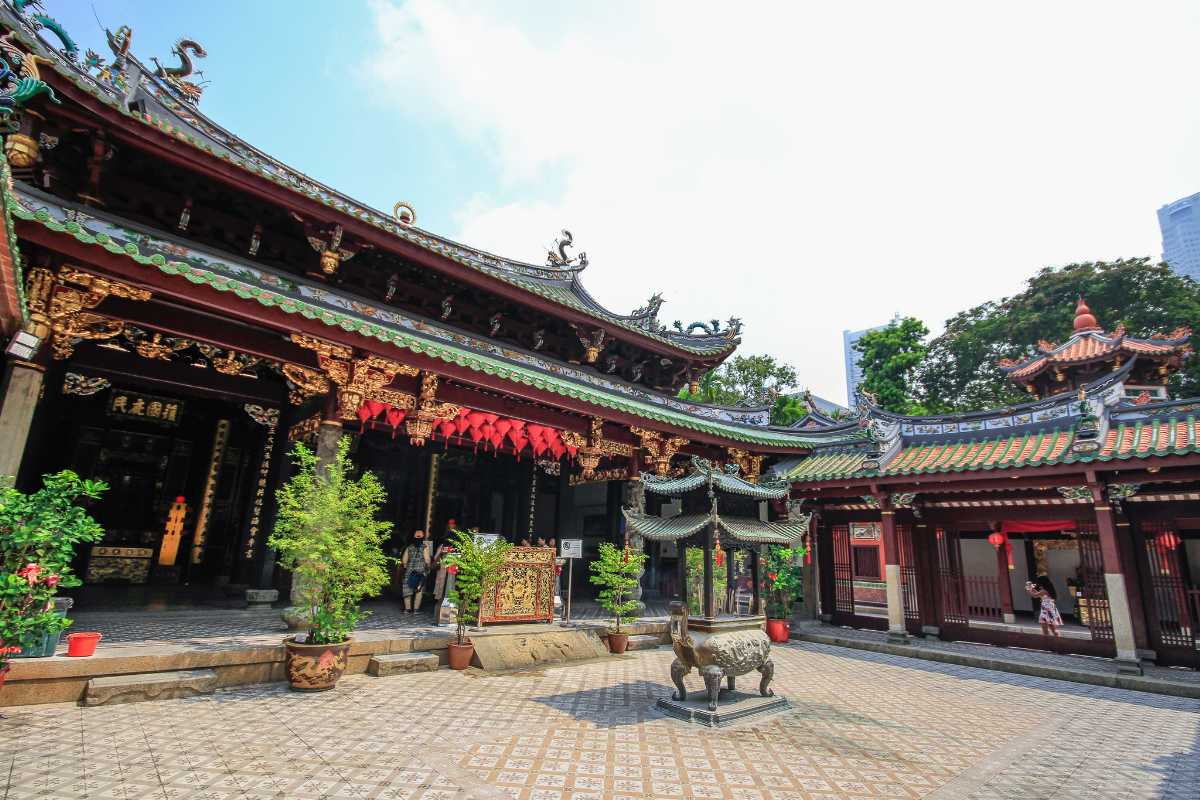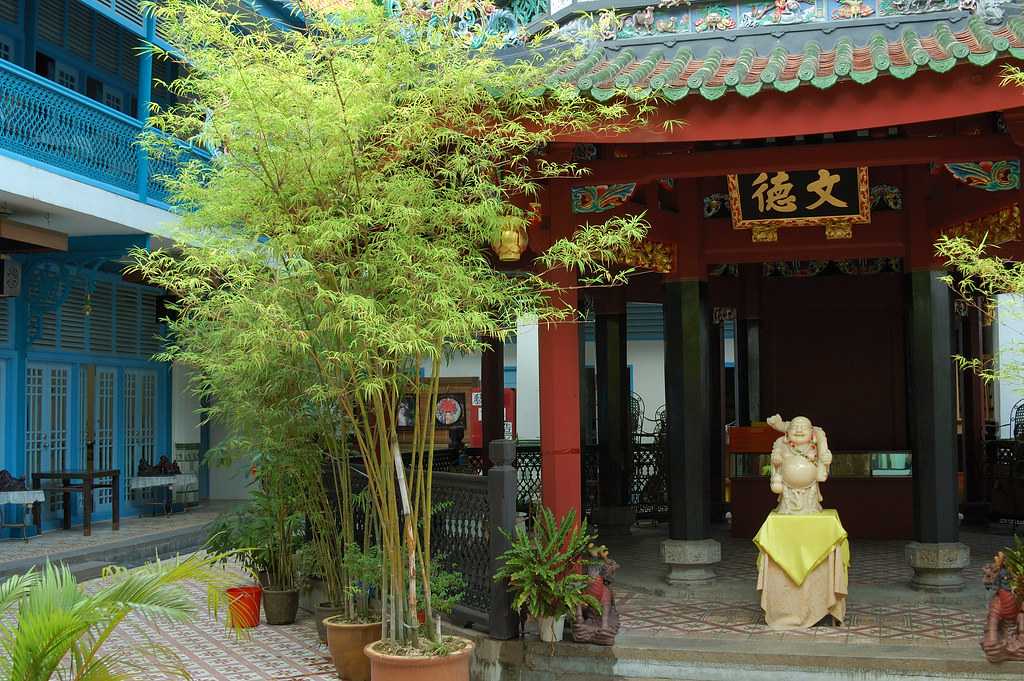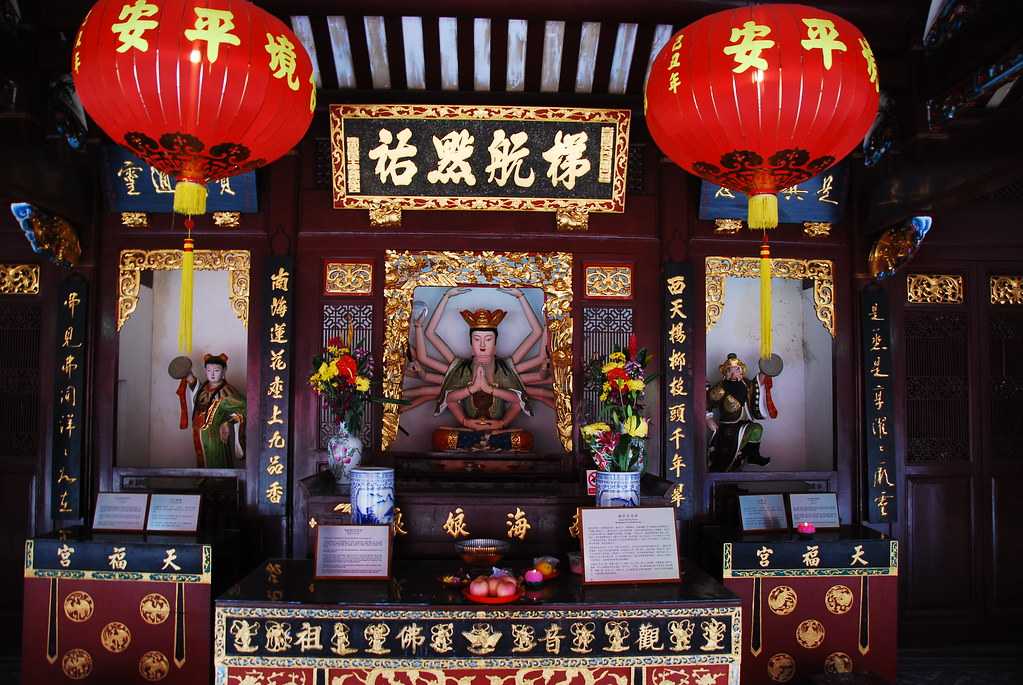Thian Hock Keng Temple
Tags : Buddhist Temple
Timings : 7:30 AM - 5:30 PM
Time Required : 1-2 hours
Entry Fee : No entry fees
Thian Hock Keng Temple, Singapore Overview
The Thian Hock Keng Temple is Chinatown's oldest and most important Hokkien temple, translating into a 'Palace of Heavenly Happiness. Also known as Tianfu Temple, it was built for the worship of Mazu, a Chinese sea Goddess. A tranquil refuge, the beautiful temple features highly symbolic architectural designs: the stone lions standing at the entrance supposedly ward off evil spirits, and phoenix and peony paintings (in the central hall) epitomizes peace and good tidings.
Built between 1839 and 1842, the Thian Hock Keng Temple was a favourite landing point for Chinese traders and sailors. The seafarers and immigrants of the Hokkien community gave thanks to Mazu for a safe sea passage on their arrival to Singapore. While at the magnificent temple, soak in the traditional Chinese architectural elements - the glaring porcelain pieces adorning the roof ridges, intricate sculptures of dragons, Pheonix and deities. The other intriguing architectural marvels of Thian Hock Keng Temple are the Scottish gates and Dutch tiles.
Read More on Thian Hock Keng Temple
History
Starting its construction in 1839, the stunning temple was built with the help of funds and donations collected over the years from the community. A statue of Mazu and numerous building materials were imported from China. The statue of Mazu was enshrined in the main hall of the temple in 1840. The building resources like timber, tiles and stone for the columns were recycled from ballasts in ships. The Indian community of the local Chulia street helped build the temple. As a reminder to the Indian community's kind gesture, a statue of a man who seems to be an Indian, holding a beam up at the ceiling was placed in the right-wing. Eventually, the temple was completed in 1842, at the cost of 30,000 Spanish dollars.
_20190826135216.jpg)
Architecture of Thian Hock Keng Temple

The entrance hall of the shrine has a single main door and two side doors that have a high step in front. The entrances on either side are adorned with vibrant coloured tiles with peacocks, rises and the Buddhist swastika designs, representing good luck, eternity and immortality. The shrine's doors are guarded by stone lions and door Gods that are said to be the traditional sentinels of Taoist temples.
The tiles at Thian Hock Keng Temple are richly decorated with red, black and gold lacquered wood exhibiting patterns of the sacred dragons and phoenixes with embellished and gilded beams, brackets and ceilings. Either side of the temple has octagonal based pagodas. The left pagoda is a shrine of Confucius, and the right one houses ancestral tablets of the Hokkien immigrants who founded the temple.

Thian Hock Keng Temple Deity

Temple Tour
How To Reach Thian Hock Keng Temple
MRT: Alight at the Telok Ayer MRT Station, Exit A, and walk for 2 minutes to reach the shrine.
